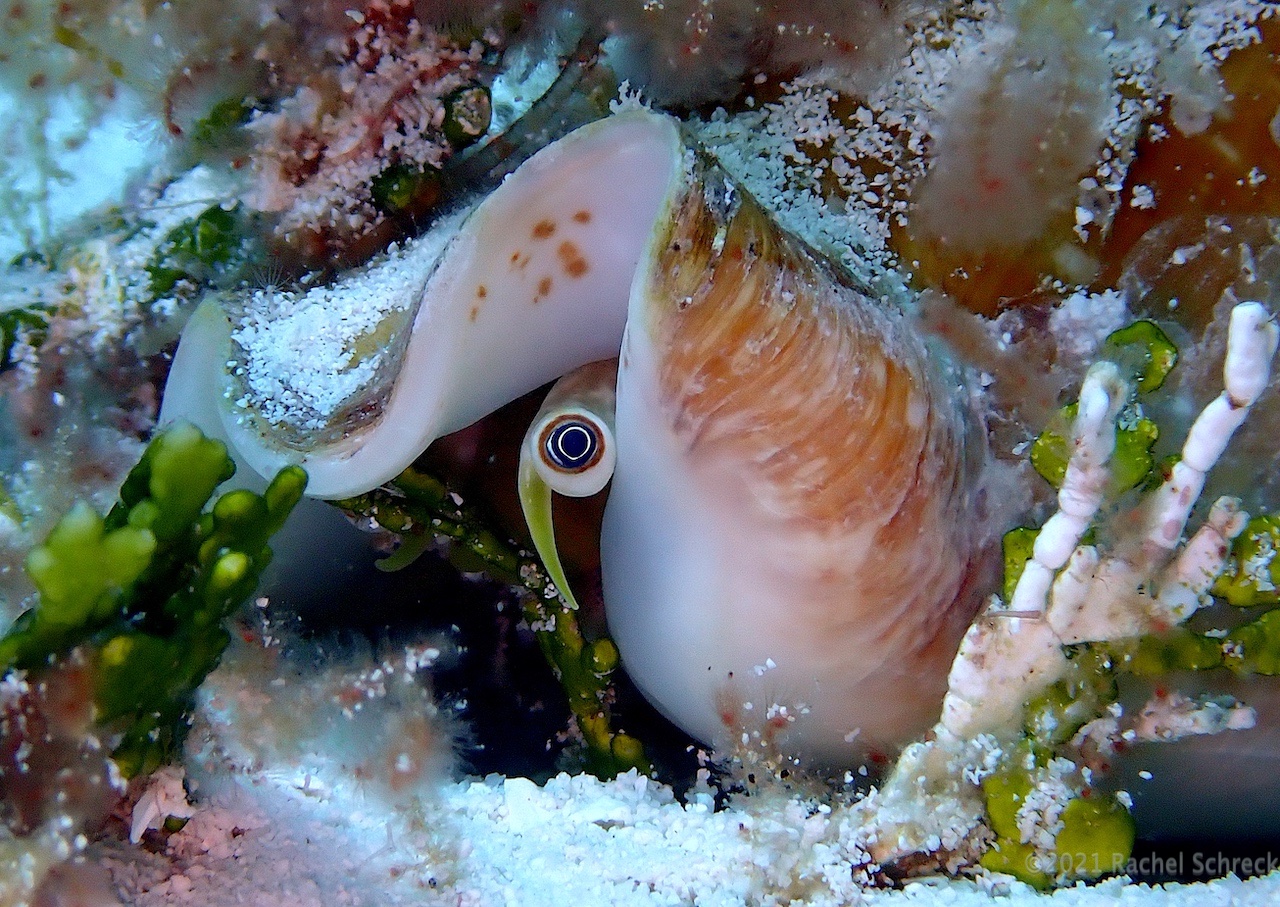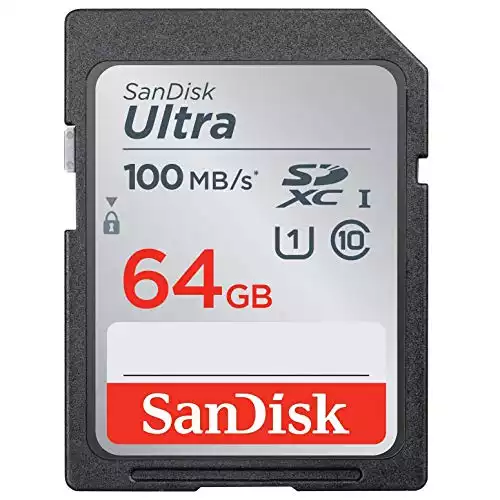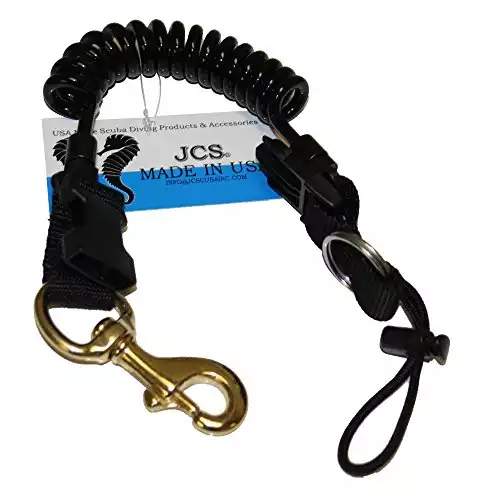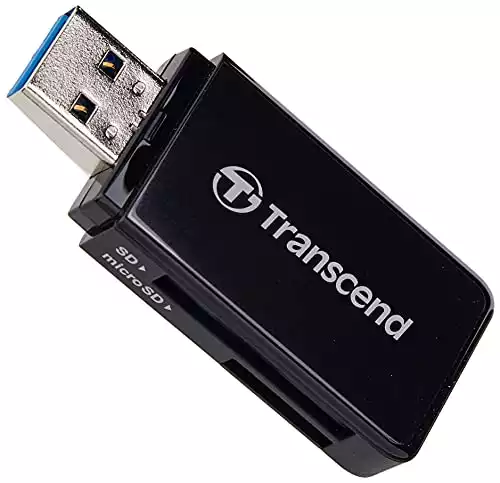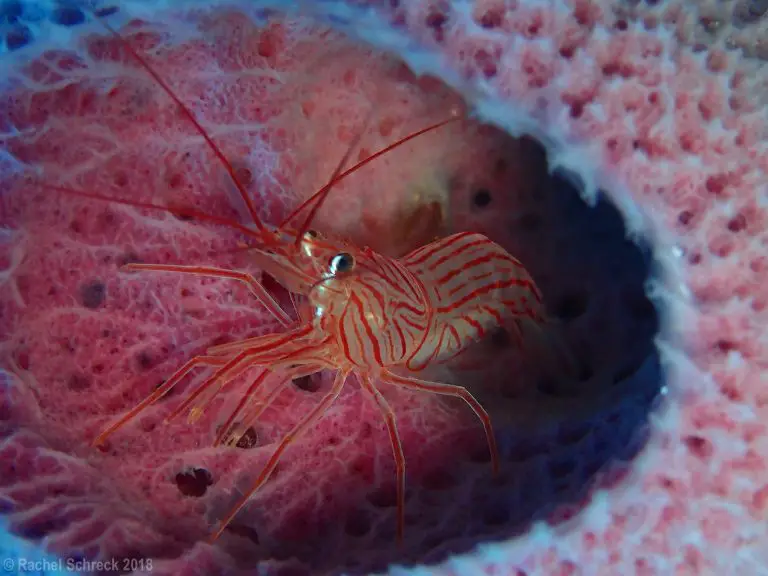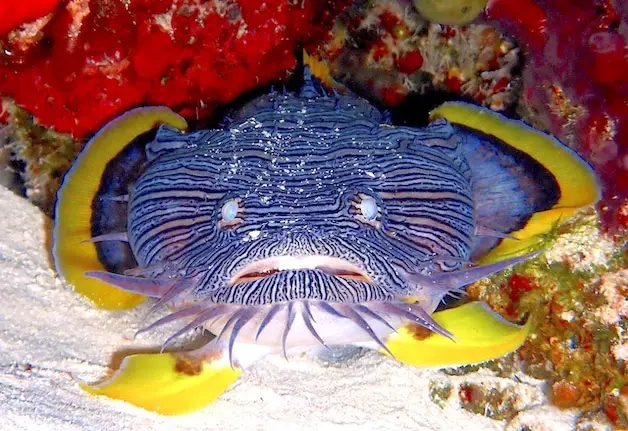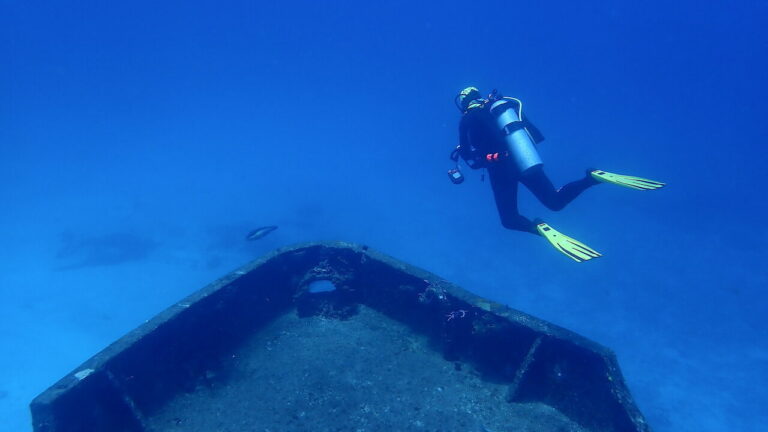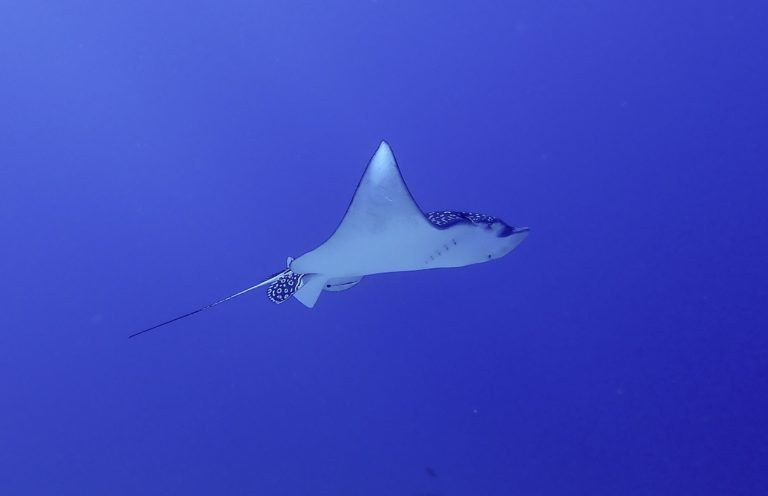Caribbean Conchs of Cozumel: Look But Don’t (Always) Eat
Conchs are large sea-snail mollusks that live in shallow waters and are frequent marine encounters for divers and snorkelers in Cozumel.
Each adult conch is also a sizable lump of tasty and nutritious meat, wrapped in a large and astoundingly beautiful seashell.
This combo has made the humble conch far more popular as a commodity than simply as a cool, ancient-looking animal to be observed from afar in the wild.

Read on for more on which conchs you’re likely to see while snorkeling or scuba diving in Cozumel, and what to be aware of to help them out in eco-friendly ways and responsible travel.
Conchs That Inhabit Cozumel Dive Sites
This stretch of the Mesoamerican barrier reef is home to several local conch shell animals, and Cozumel divers can encounter them on pretty much every dive.
They’re a great subject for beginner underwater photographers, as they’re everywhere you look, and they can’t run away from you too fast!
But at the same time, it does take growing skill with your diving buoyancy and overall control to get close to them, and do so slowly and calmly enough to see their excellent eyestalk, for example. (If you’re too abrupt or awkward, they’re more likely to pull fully into their shell, for obvious reasons).

It’s especially easy to find various conchs while diving in Cozumel if you look in grassy seabed areas on certain dive sites, or anywhere along the sandy ocean floor.
There are notable sandy slopes in the Palancar reef section that are full of them, for example.
These especially crowded conch areas are most likely conch breeding grounds, as the animals tend to cluster in large groups when it’s time to reproduce.
According to National Geographic:
When you’re a conch, mating is better in a group. In fact, it’s the only way it works. These slow-moving Caribbean sea slugs carry heavy pink and orange shells, which make chasing down mates cumbersome. To be successful, a mating ground must have some 50 or more conchs spawning at once.
Nationalgeographic.com
The most common Cozumel conchs species are:
- the queen conch
- horse conch
- milk conch, and
- a number of related sea snail cousins, like the king helmet and the true tulip snail
The Caribbean Queen Conch
The queen conch (strombus gigas) is perhaps the most recognizable and abundant conch in this region.

The queen conch shells are large, grand seashells, with an interior of brilliant pink and orange hues.
This makes the queen conch shell animals a bit easier to identify underwater.
It also puts them in even more danger, as the clean conch shells, themselves, make for beautiful objects. (But please don’t buy them! More on this, below…)
Other Cozumel Conchs
Other types of conchs frequently seen on Cozumel’s best dive sites are the milk conch (see feature picture for this post), the horse conch, and other related large snail mollusks, like the brilliantly red-flesh colored true tulip snail and the striking king helmet.
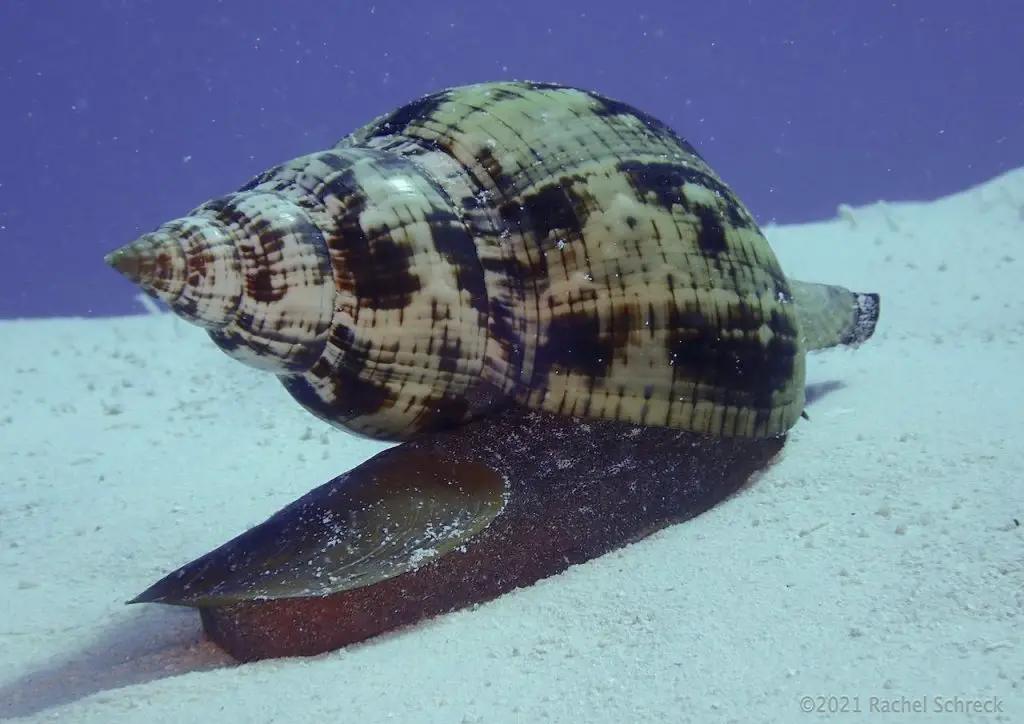

Where to Find Conchs in Cozumel
Conchs in Cozumel’s Marine Protected Area
Typically, conchs will gravitate in shallow seagrass beds offshore, as well as throughout all sandy areas in and around the coral reefs.
These large mollusks reach reproduction age after several years, and typically lay large egg masses along the ocean floor. With certain conch types, their egg masses are white-beige and sticky, so they blend in and get covered over by sand, as in the case of the Queen Conch eggs seen here:

The very different egg casing seen below is from a similar conch type, likely the horse conch.
As mentioned in my recent post about various marine eggs and “parenting” styles, I always think this egg mass looks like a discarded air filter, of some kind.

Scuba divers occasionally see these deposited in various parts of Cozumel’s national marine park.
In both cases shown here, the egg masses hold hundreds of thousands (!) of potential little baby conchs, left to drift and eventually fend for themselves – much easier in a marine protected area, but still not an easy feat.
Adult conchs, even adult queen conchs with their massive shells, are prey for our local nurse sharks that use strength and suction to remove the animals from their shells, as reported in Oceana.
Smaller or less mature conchs are consumed by various natural marine predators, including the local sea turtles.
Conch Meat is Popular in Cozumel but Restrictions Apply
Beyond diving and snorkeling, in Cozumel you’re most likely to encounter conch on a menu.
Conch is an iconic animal in island communities and the conch meat is in many cases a critical subsistence food, caught and consumed by local residents and important to their overall food security.
In our local restaurants, it is a frequent protein choice and especially popular in conch dishes like ceviche, conch fritters, and conch meat soups or chowders.
Ceviche is a menu staple in Cozumel, and often you’ll find conch as the predominant meat in the citrusy mix, along with fish, Caribbean spiny lobster meat, and octopus.
When visiting Cozumel, it’s important to note that the island had a long ban on the harvest of conch from 2009 to 2019, to allow the population numbers to rebound.
The island also luckily has the national marine protected areas, where fishing is never permitted (though poachers inside the Cozumel marine park do exist, unfortunately, without the fisheries management resources to monitor this 100%).
In Quintana Roo, the state-wide ban was helpful to the rebound of the species locally, and so was lifted in 2019. However, as the ban was lifted, restrictions on seasonal harvesting of conch were put in place.
Conch is not forbidden to hunt or consume in Cozumel, but there is an established season on when it is allowed, now – along with other local animal hunting season restrictions all residents and tourists should know about, and seen here in this helpful graphic chart made available by Coral Hero:

If you’re here outside of the months where fresh queen conch – or caracol rosado, listed last on the chart – is permitted (it’s OK from November to April), please don’t order it, or double-check with the restaurant to make sure it is from a frozen supply to be used during the off months.
Avoid Conch Shells as Souvenirs and Decorative Arts
Conch Shells are beautiful, there’s no denying that. They’ve also been used as cultural objects for hundreds of years, as things like ceremonial adornments, horns, and currency.
But like most animal-based products, trade of queen conch shells, or buying them as polished souvenirs of your vacation can perpetuate the problem of their declining numbers.
It’s complicated, as the large shell is a byproduct of the catch.
Further, as I first learned in this fascinating article from Atlas Obscura the shells are traditionally removed from the ocean at the time of harvest because conch fishers believe that the presence of empty, dead conch shells will cause live conchs to avoid settling in that same area.
Left seemingly unused on beaches, the incredible shells were a natural shell collectors’ target, and the clean conch shells became great raw material for use in making jewelry, polished curios, wind chimes, and other typical “tropical” keepsakes.
You’ll see various Cozumel street shopping vendors with exquisite conch shell creations, and it’s tempting – and also tempting to give some business to the vendor! (Those guys have to eat, too, right?)
But it might not seem as worth it when you try to pass through customs on your way home.
The Queen Conch and its “look-alike species” are included on the UN’s CITES Appendix II list – CITES being the Convention on International Trade of Endangered Species, which means:
Appendix II lists species that are not necessarily now threatened with extinction but that may become so unless trade is closely controlled. It also includes so-called “look-alike species”, i.e. species whose specimens in trade look like those of species listed for conservation reasons
CITES
Try to think of conch shells (or any seashells…) in the same way you might think of ivory elephant tusks, shark fins, sun-dried seahorses, or endangered hawksbill turtle shell knick-knacks.
In the grand scheme of things, removing conch shells, or buying them as decor, can contribute to the general loss of marine ecosystems the world over.
Abandoned seashells are often reused by other animals, and even if not they contribute nutrients back to the habitat, and are critical for defending against erosion and ocean health, in general.
For more eco-friendly tourism and responsible travel, look for authentic (but far less environmentally questionable) local artworks and sustainable Cozumel souvenirs instead, like some of those found in this related post on some of the best authentic local shopping in Cozumel.
Are Caribbean Conchs Endangered?
As noted in the CITES classification above, conchs generally are not yet on the brink of extinction, but they easily could be if existing and new restrictions on fisheries and exports are not followed.
In the past many years, conchs have been harvested in far greater numbers than necessary to provide nutritious protein for local residents and restaurants and have grown as a lucrative export product, namely in places like the Bahamas.
Unfortunately, a large percentage of the animals are taken before they’ve matured to adult conchs, and shy of their reproductive age, which is typically 4-5 years.
Combined with general pollution, coastal development, hurricane damage, and warming trends, and even the spikes of “panic fishing” observed at the start of COVID-19 lockdowns, as noted by this journal article from PeerJ, many conch populations have declined greatly in the past few decades, and are now in danger of eventually dying off.
As mentioned, in many coastal Caribbean areas there have been restrictions and outright bans on conch fisheries in attempts to allow adult conch numbers to rebound or even just survive.
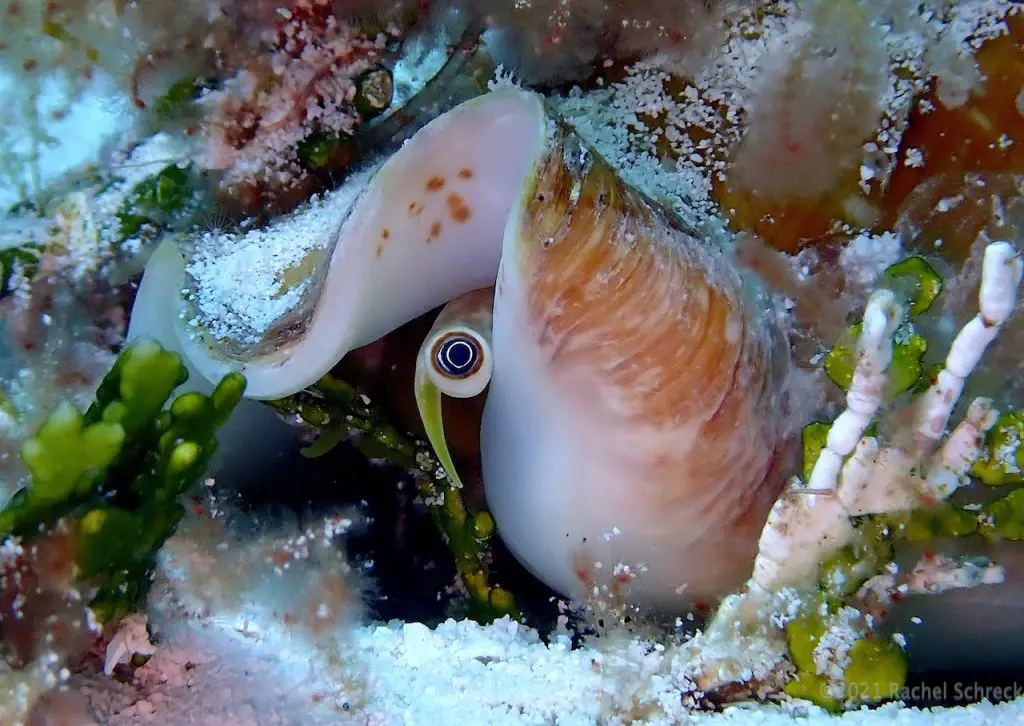
Marine Life in Cozumel – Check out More
For more on conchs, tropical reef animals that mate for life, a full guide to Cozumel’s resident sea turtle populations, and more, please link to some other posts, and browse through our blog pages.
Also, don’t forget we have a full FAQ Page here for common visitor questions, and there’s always the search function window on the upper right of each page to help you find what you’re looking for.
If all else fails, feel free to use the Contact form with any specific questions, or blog topic requests.
Underwater Photography in Cozumel – Suggestions
If you’re getting into
I’ve met a lot people who started off with WAY too complicated and expensive underwater camera gear, sometimes even before they know if they’ll like it or have a knack for it.
I’m…pretty much the opposite. My personal challenge is trying for good-great results with the simplest UW camera setup possible. Less is more.
I took all the underwater photos in this article, and the other ones on this website, using the list, below.
My advice? Start simple, and consider adding from there after you’ve got a lot of good diving and buoyancy practice under your (weight) belt.
I write all about this HERE so check it out if you’re looking to buy your first simple (but quality) UW photo set up.
- Easy to use
- Easy to pack
- Easy on the wallet
- Durable, waterproof, dustproof

